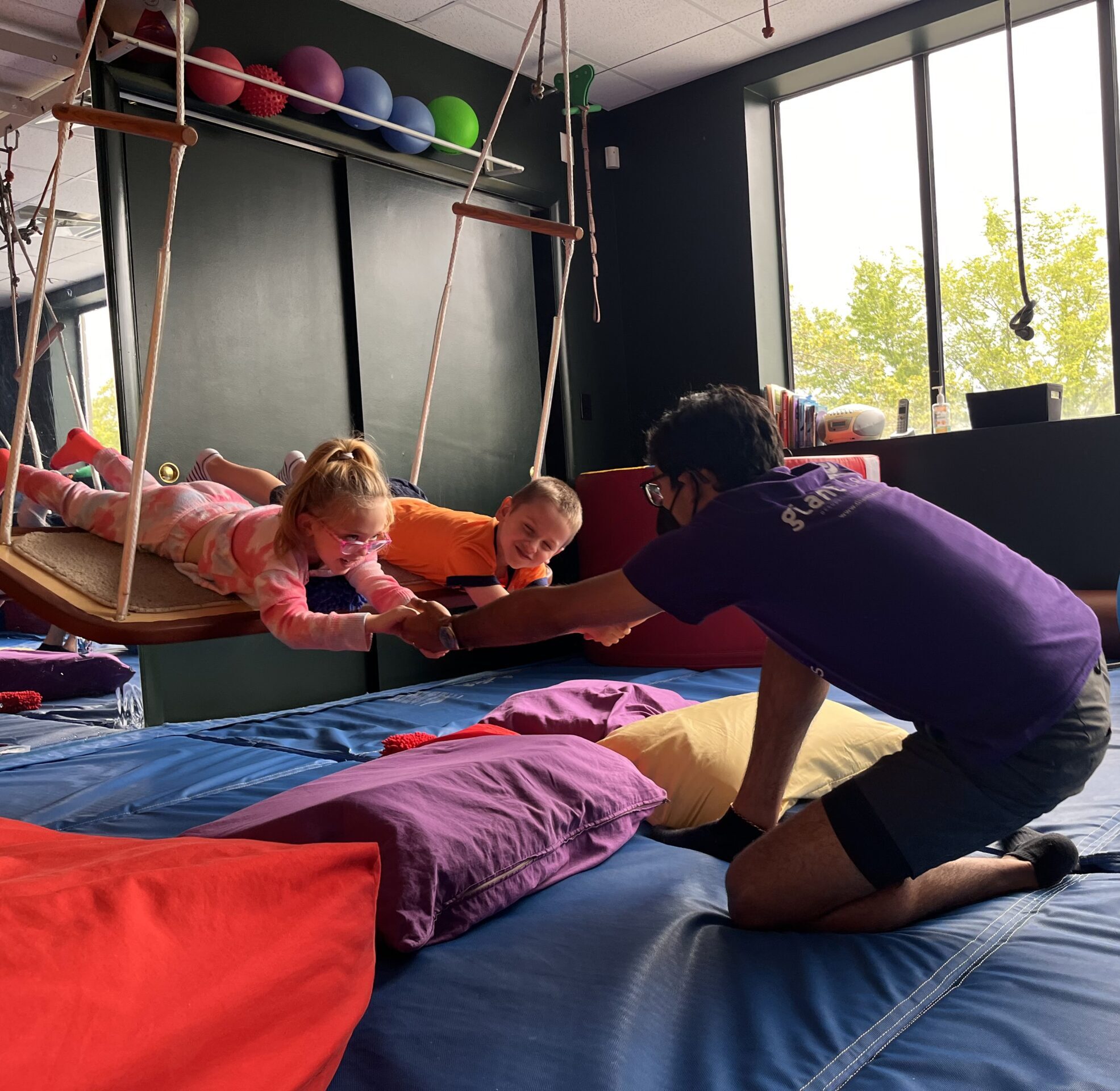sensory integration therapy
We use the principles of sensory integration theory to address each child’s underlying sensory and motor issues, thereby building a strong foundation for life skills.
Treatment is individualized and engages the child’s unique interests in the context of play. Activities are designed to be challenging enough to motivate, but supported enough to ensure success. Creating this “just-right” challenge necessitates a dance between the child and therapist as adjustments are continually made in response to the child’s performance and sensory responses.
To help a child self-regulate—turn the volume up or down on their experience of the world—we combine cognitive strategies with sensory integration intervention techniques. As a child gains an understanding of their arousal level and response to sensory stimulation, they can often find increased ease and comfort in their daily life. As an adjunct to treatment, we may create a sensory diet to help the child maintain an optimal state of arousal, and/or gain greater body awareness prior to performing skilled tasks.


sensory processing/sensory integration
Sensory processing refers to the neurological process of analyzing, organizing and interpreting sensory information, and subsequently, planning and making a response.
We discover and experience the world around us through a constant flow of information from our eight senses—touch, hearing, sight, taste, smell, proprioceptive (body position), vestibular (movement and balance), and interoceptive information.
Sensory processing typically happens seamlessly, and we are not consciously aware of the work our brains are doing. We innately understand what is happening around us, how we need to respond, and automatically develop a plan or action sequence in response to the sensation. For instance, most of us can easily discern a congratulatory pat on the back from a “listen up” tap on the shoulder and quickly respond accordingly.
Without this unconscious sense, children who have difficulties efficiently and accurately processing sensory information may be misunderstood, and the disorder is often unrecognized.
However there can be problems with how these systems communicate, resulting in sensory processing difficulties. A sensory input may feel too strong or not register as strong enough to require their attention. A child may fail to filter out unecessary information from a sense and miss the main idea of an activity. Unfortunately, sensory processing does not come naturally to all of us.
sensory processing disorder
A diagnosis of Sensory Processing Disorder (SPD) is given when difficulties with sensory processing begin to affect a person’s every day ability to participate in their lives at school, home, in the community, on the playground or at work.
Sensory integrative dysfunction is seen in otherwise typically developing children as well as those with autism, attention deficit disorder, learning disabilities, and other neurological conditions. A child with difficulties processing sensory information may have delays in motor skills and problems with self-regulation, attention, and behavior.
A child, teen or young adult with sensory processing difficulties may perceive sensory information as overwhelming, confusing or distorted. Oftentimes, seemingly simple tasks are frustrating and the child does not feel the usual security, confidence, and joy from activity that other children do. Sometimes primary bodily needs like hunger, thirst, and warmth are not met.
With treatment, our patients master skills and increase self-confidence!


START MAKING GIANT LEAPS
please contact us to begin
